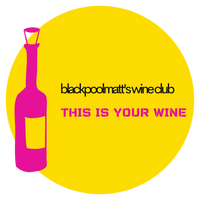when it’s not champagne
Unfortunately, sparkling wine no matter where it’s from is often referred to as “Champagne.” This of course is inaccurate: champagne must come from the Champagne region in north-east France. But what about sparkling wine that isn’t from Champagne? Although they don't always have the defined identity of champagne, these wines can represent great value if you know where to look.

the other French stuff
Crémant is an overall term for several appellations for French sparkling wine not from Champagne. The standardized term, formally introduced in 1985, was supposed to create a category recognizable to the consumer. However, there are two problems which have impeded its success: quality has been inconsistent and there is no set style. The Crémant regions include Alsace, Bourgogne, Loire, Bordeaux, Limoux, Die in the Rhône, Savoie, and Jura. That’s a lot of different climates and grape varieties.
But it feels the standard of Crémant is on the up, as producers focus on growing and picking grapes well-suited to sparkling wine production. The cool climates of the Loire Valley and Alsace are particularly ideal for bubbles and here are a couple of examples from the wine club:
Domaine Albert Mann Crémant d’Alsace Brut Nature 2017
An historic, biodynamic winery producing a range of seriously good wines, including this Crémant. Instead of the easy, fruity style of most Crémant, this is a serious, lean, elegant wine which could easily be mistaken for champagne.
Maison Foucher "Cuvée des Roys de Naples" Crémant de Loire Brut Rosé NV
A blend of Pinot Noir and Cabernet Franc, this is a fruity, easy-drinking sparkling rosé from the heart of the Loire Valley. Like most Crémant, it's great value making it ideal for just about any occasion.
These two wines demonstrate the variety of Crémant which can make it difficult to know what to buy. But there is a clue: the Albert Mann costs $37, while the Crémant de Loire is $18.
cava
Cava is a region which stretches across Spain leaving it, like Crémant in France, with a lack of identity. There is a lot of high-volume wine being produced, but a little bit of knowledge will take you to the smaller, higher-quality wineries.
Most cava comes from Penedès, just south of Barcelona. There’s a cooling Mediterranean influence and elevation is also significant. Grapes planted lower down get riper, while those at higher sites (250-350m) maintain their acidity. A lot of cava is a blend of these different locations, but the wines with the most identity stand out because they are from individual sites. This has led to the creation of Paraje de Cava Calificada, a high-end designation for single-vineyard wines.
But smaller producers already follow similar practices, owning and farming the vineyards rather than buying the fruit, for higher-quality, consistent wines.
Juvé y Camps is an historic producer, making wine since 1796 and sparkling wine since 1921. They pioneered the Gran Reserva style of cava, where the wines are aged for a similar length of time as vintage champagne. The wines are made in a powerful rich style, but still with a fine elegance.
Cava in general is improving in quality, which—excitingly—is drawing attention to smaller producers who have always been focused on making distinctive wines.
sekt
Germans drink more sparkling wine than any other country in the world, although it's not always the best stuff. German sparkling wine is called Sekt and a lot of it is made from grapes imported from eastern Europe. However, there is some increasingly fantastic Sekt with a regional identity being made by the best producers.
Although the best Sekt is made in the same way, it's different from champagne because it's much more aromatic. That's because the grape variety is Riesling, one of the most characterful white grape varieties. Given the naturally high acidity of Riesling as well as its innate qualities, it's no surprise that it can lead to great sparkling wine.
Gebrüder Simon Riesling Sekt Brut 2018
Another historic winemaking family going back to the 1700s, their sparkling wine was first produced in 1995—and it's their Sekt they've become most known for. It comes from two vineyards in the Mosel, giving it an identity that basic Sekt lacks. From a cool climate and made from Riesling, it needs the 10g/L of dosage to give it a bit more body to back up the complex, smoky aromatics and high acidity.
england
And we finish with England, which over the last 20 years has carved a reputation to equal that of Champagne. Thirty years ago, however, there was virtually no wine industry in England; now, the wines are globally acclaimed. That's because wine lovers have realized that England has similar soils to Champagne and a cool climate that's benefiting from climate change. The result is highly sophisticated wines which can be hard to distinguish from champagne in a blind tasting.
Hush Heath "Balfour" Brut Rosé 2013
As with many other English wineries, Hush Heath was only established 20 years ago but the quality of the wines is superb. The rosé has been served on the Orient Express and at the 2012 Olympics, and is aged for 38 months on the lees to accentuate its complexity while dosage of 9g/L balances the racy acidity.
I would never try and dissuade anyone from drinking champagne, but nevertheless there are so many alternatives to consider for those who wish to explore the world of bubbles—and these wines are only the tip of the iceberg.
